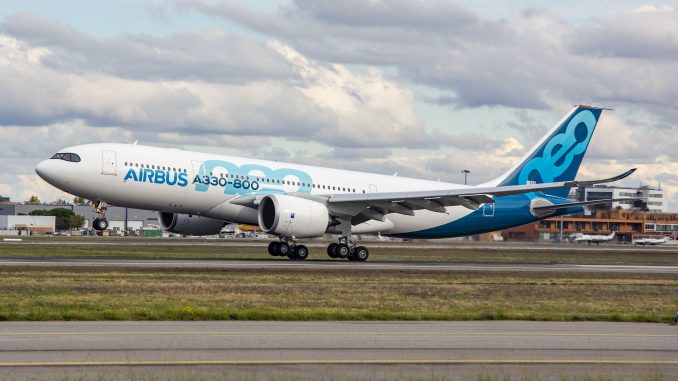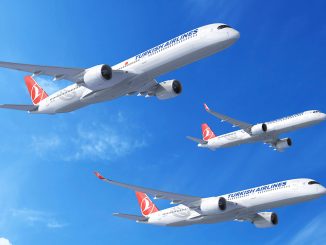
The Airbus A330-800neo, the second and smaller variant of the A330neo family, has received joint type certificates from the European Aviation Safety Agency (EASA) and the US Federal Aviation Administration (FAA). As such, it is now able to legally carry passengers in commercial service around the world. The first delivery is scheduled in the coming months.
This new version of the A330neo can typically carry between 220 and 260 passengers up to a range of 8,150 mmi (15,100 km). It completed its first flight on 8th November 2018. In comparison, the larger A330-900neo can fly 260-300 passengers over a slightly shorter range of 7,200 nmi (13,400 km). The -900 received its type certificate on 26th September 2018, and is already in service with several customer airlines. That aircraft later received its ETOPS certification on 24th January 2019.
Airbus has so far only logged 14 orders for the A330-800neo, whereas its larger version, the -900, currently has orders for 323 a total of aircraft, of which 45 have been delivered as of January.
Orders for the A330-800neo have been placed by Kuwait Airways and Uganda Airlines, with orders for eight and two respectively. A further four orders have reportedly been placed by currently unidentified customer(s). Air Greenland recently signed a Memorandum of Understanding for one single aircraft, however, this has not yet been firmed up.
The Airbus A330neo family is powered exclusively by the new Rolls-Royce Trent-7000 engine, and features a newly designed wing, purpose built for the twin engine design, further improving efficiency. The legacy A330ceo (current engine option) had a wing design commonality shared with the A340, which was easily adapted for either twin of four engine use (although not interchangeable), therefore reducing costs and manufacturing complexity.
Airbus claims the A330neo provides a 25% fuel burn saving versus its previous generation competitor, which while that type is unspecified, is likely to be the Boeing 767.
Matt is a Berlin-based writer and reporter for International Flight Network. Originally from London, he has been involved in aviation from a very young age and has a particular focus on aircraft safety, accidents and technical details.



